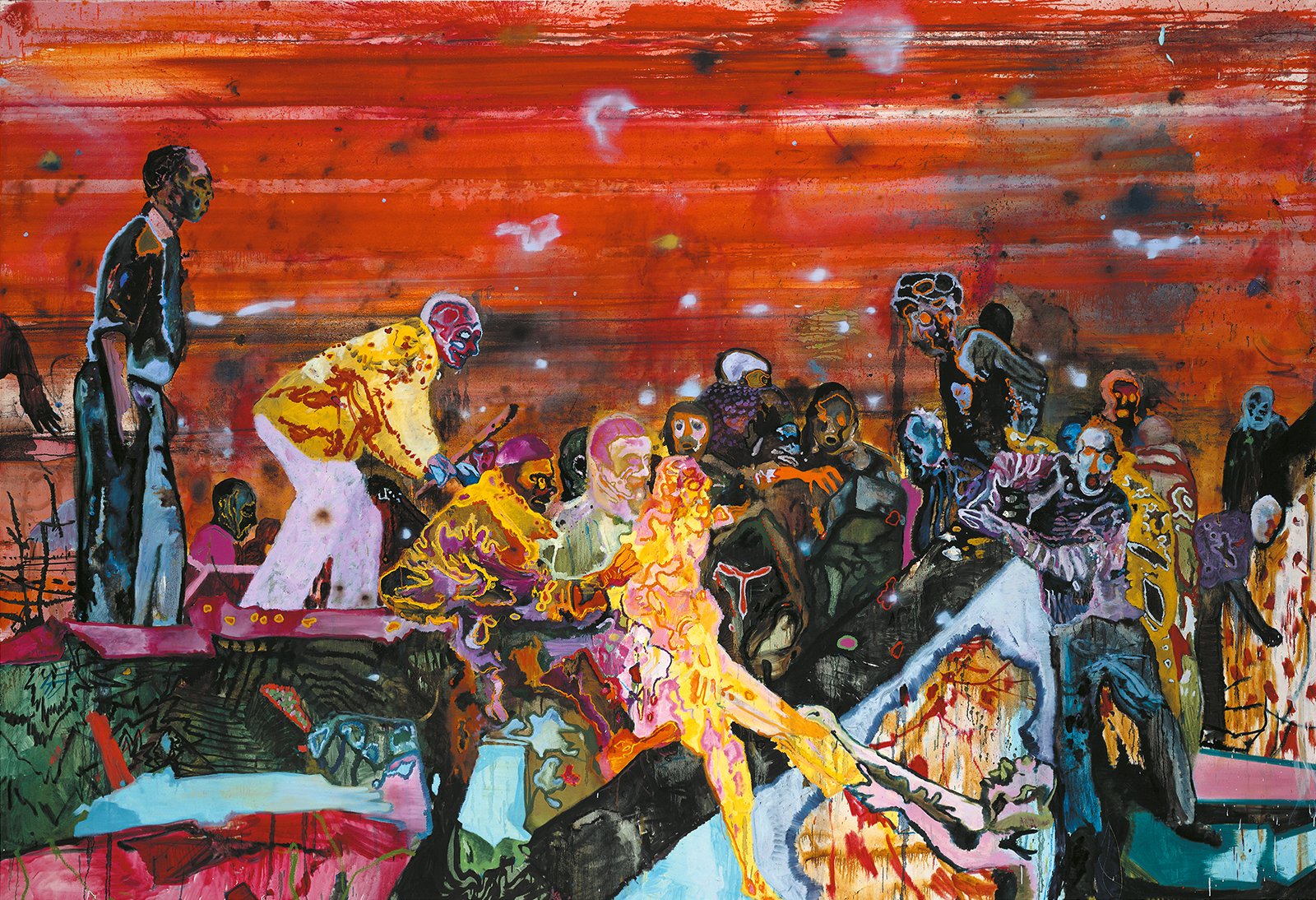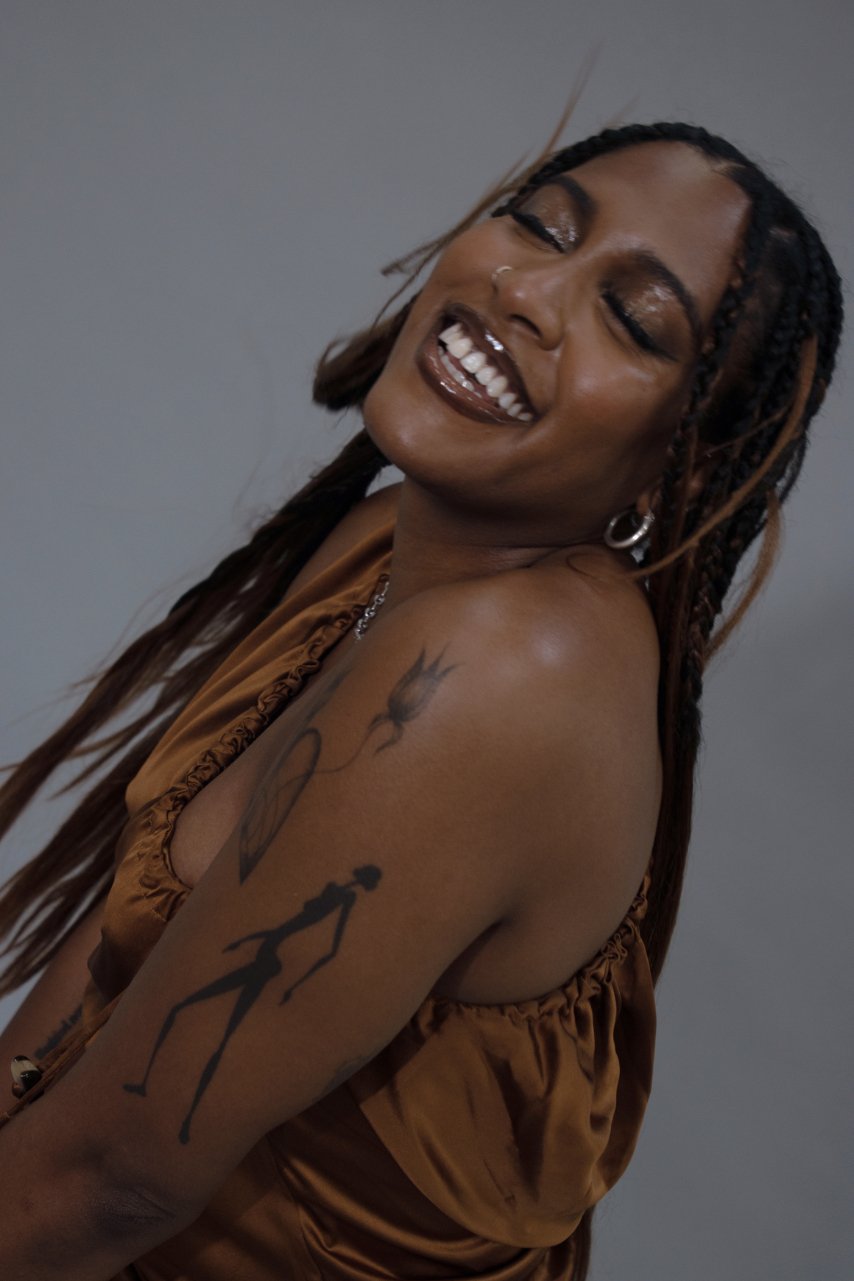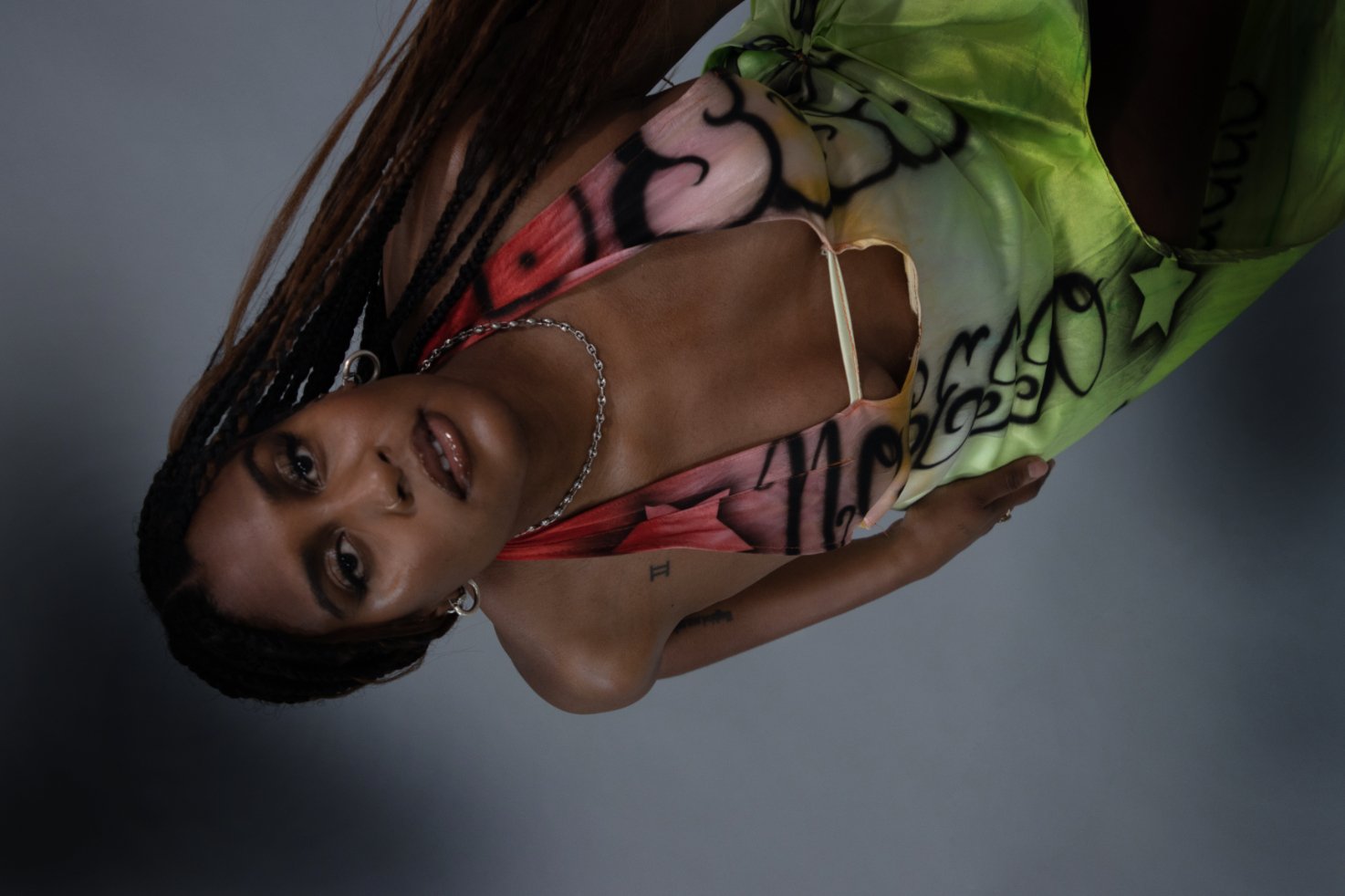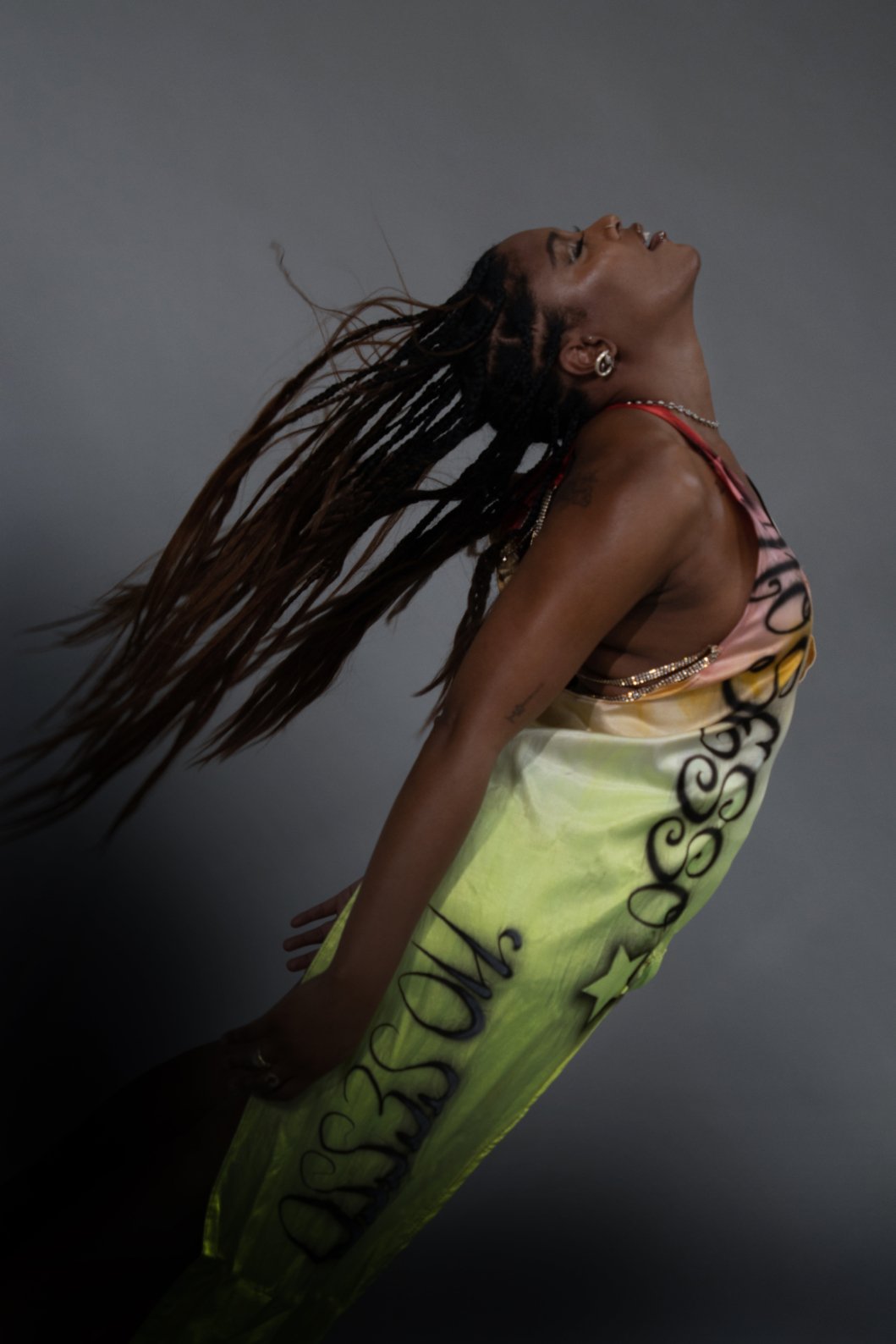Daniel Richter
Fun de Siecle
2002
Oil on Canvas
115.75 x 151.18 inches (294 x 384 cm)
interview by Oliver Kupper
Artist Daniel Richter cut his teeth designing music posters and album covers in the antifascist, squatter punk scene of Hamburg in the 1980s and ‘90s. Now based in Berlin, the spirit of rebellion is wielded by the knife blade of his paintbrush in works that cross violently across the threshold between abstraction and figuration. With inspiration from early French symbolists, his work holds a mirror to a society pervaded by chaos and perversity. His show, Limbo, which coincides with the 59th Biennale di Venezia, was presented in a palazzo where a Catholic brotherhood once provided spiritual benediction to those sentenced to brutal public executions. Today marks the opening of his solo exhibition, Furor II, at Regen Projects in Los Angeles. We caught up with Richter while he was on vacation in Trieste, Italy where an oligarch’s seized Philippe Starck-designed superyacht was moored just outside his hotel window.
OLIVER KUPPER: As someone who grew up in a Germany divided by communism and capitalism, can you talk a little bit about this and how it influenced your work?
DANIEL RICHTER: My work is based on only one belief system, and that's the church of painting (laughs). Growing up in Cold War Western Europe in the northern German countryside meant that you were embedded in a welfare system that guaranteed education, a higher level of consumption, social security, pension funds and, at least for the white working class, the promise of leaving its class behind. During the Cold War, the communists had to prove that they were guaranteeing a better, more just life than capitalism, but they didn't. Both are installed narratives, but capitalism has won. And the culture we all participate in is like a big blob of oil drifting in an ocean of shit, and both are not mingling. The promise of this constant cultural production offers the poor the promise that if they only try hard enough, they’ll make it, they will be able to participate. But that pile of shit, that huge ocean of misery, depression, exploitation, and materialistic promises is not gonna go away just because you finally can afford a Rolex. A very boring dream came not true. The idea or belief that life could be fair and everybody should have the same rights and the same benefits has sadly nearly completely vanished.
KUPPER: In Europe, and around the world, there’s a growing xenophobia just under the surface and I think your paintings started to explore this shortly after 9/11.
RICHTER: Yes, for sure. Xenophobia, such a noble word for racism! I find it interesting that those nationalists and racists find their counterpart in the Islamists, the same idealization and hatred towards women, that whole idea of a dumb, violent patriarchal system. When 9/11 happened, it could have been way worse if they had been thinking in military terms. They could have bombed atomic power plants. Instead they bombed the Twin Towers as a symbolic castration of the West’s finest power symbols. It’s a war against women, a war against softness or weakness. It’s a war against reason and reflection. It's a war for dumb guys believing in lord penis, in guns and violence, and all that kind of paranoid, fascist, megalomanic power scheisse. And it's always “the nation” or “righteous path” or “the glorious past.” And in a weird way, they won, because you could say that Trump, or Putin, or Bolsanaro are all perverted, Christian versions of these extreme Islamic beliefs. It’s weird, this dialectical hop that the whole thing took in the years after 9/11. Invading Afghanistan, Iraq, Libya, and then the engagement in Syria—all in the name of democracy and women's rights with the result of not liberating one woman, but incarcerating all of them. I always wonder why nobody talks about the flourishing American economy under the auspice of homeland security. The military machine is an absolutely idiotic, counterproductive system. All these combinations just build up so much anger, frustration, and depression.
Daniel Richter
Amsterdam
2001
Oil on Canvas
88.58 x 57.87 inches (225 x 147 cm)
KUPPER: It definitely seems like we're on a path to some kind of collapse.
RICHTER: On the other hand, darkness is huge and your little iPhone lamp is small, but also when night is the deepest, dawn is the nearest. I don't know—how did we get into this topic? Oh yeah, my paintings—my paintings are beautiful and colorful, by the way.
KUPPER: Art is a good way of synthesizing these ideas. Like the work of Francis Bacon, who people compare your work to—the zeitgeist of war, by osmosis, embeds itself into the artist’s psyche.
RICHTER: I understand why people make that relation to Bacon, but it was accidental. I think it has to do with those images I made that focused on WWI cripples—guys that lost their legs in combat and are on crutches looking like sad insects. And the squeezing and banding of those figures, combined with the flatness of the backdrop, the aggressiveness and the softness of the bodies—the stress and tension somehow forced itself into an architecture superficially similar to Bacon. But his bodies were isolated and under observation in an empty theater. In my work, the space itself pushes the figures. I never really liked Bacon that much, though—not a lot of humor in it. I gained more from late 19th-century French painting because it’s so beautiful and bourgeois, and so distant from my thinking. Before the first World War, art was more optimistic and also already influenced by different cultural and technological sources, from African sculpture to Japanese woodcuts, and from lithography to photography. I think comic books were for me what photography was for them. And then, there was the whole thing about the possibilities and opportunities of the brush and the material of paint itself. These ideas in those days were like promises of an unknown land, that bland is now discovered and mapped, but I like to pretend it’s not. Sounds nostalgic, I know.
KUPPER: Going back to comic books and your upbringing making art for album covers and posters, can you talk a little bit about how you got into working within the music scene?
RICHTER: In the early ‘80s, late ‘70s, when I was young, punk was the way out. So, I moved to Hamburg. Hamburg was a city with lots of squatters and a red light district with a certain underground appeal. I couldn't make music and I didn't want to make music because you have to rehearse with others, which is how I realized I could draw. So, that was the natural role the subculture chose for me.
© Daniel Richter, Courtesy Regen Projects
© Daniel Richter, Courtesy Regen Projects
KUPPER: What was the visual language that you were pulling from when you were making these album covers?
RICHTER: I would say somewhere between Raymond Pettibon, Charles Burns, and the work Ub Iwerks did for Disney. But also, John Heartfield, George Grosz, that kind of Dada influence. In those days, information was rare, so it was gathered at record stores, in fanzines, and at concerts. And there was also Linder, who designed the Buzzcocks’ seven inch, Orgasm Addict. And all the Crass records—the idea of having an anarchist collective designing a whole identity for a band and accidentally becoming the role model for millions of idiot punk bands afterwards is quite funny. If there was a band I really liked and they appealed to me, I would do artwork for them, and if somebody needed a poster for an antifascist action concert, I would also do that. I have an antifascist background, so I would design posters and t-shirts for demonstrations etc. You just steal from everybody—it’s very simple.
KUPPER: How did you get involved in the antifascist movement?
RICHTER: There was a squatting scene in Hamburg in the mid-’80s, but there was also a huge right wing hooligan scene and regular trouble with fascists and skinheads at concerts. Hamburg was also the home of the militant neo-fascist movement in Germany. So, at some point, we had to turn to self-defense. I mean, all over Germany, generally all over the world, every city has its underground where the outcasts hang out, but every city also has this right wing, macho culture that aims their anger at a perceived enemy. Throughout the ‘20s in Germany, there were a lot of working class, self-defense movements against the Nazis, like the Antifaschistische Aktion.
KUPPER: Did you ever experiment with psychedelics when you were that age?
RICHTER: The only drug I really recommend, also because it does the least harm to mankind and those producing and distributing it, is LSD. I think LSD is a great drug. It’s very fascinating to watch your brain connecting thoughts, feelings and observations, and structuring the world as a constant ornament in very complex layers, and also leaving your body behind, or intensifying its tactility is a life-changing experience. Weird, that even this drug is nowadays used as a self-optimizing tool.
Daniel Richter
Bill
2015
Oil on Canvas
78.74 x 106.3 inches (200 x 270 cm)
KUPPER: People have described your work as psychedelic, would you say that’s correct?
RICHTER: For some of the work, I think it fits well. Some of the early, non-figurative, abstract work was definitely a way of getting the complexity of psychedelics together with chaos theory and the looming of the world wide web, you could say. Digital tools in the early ‘90s were promising as a means to change the world for the better … but that just transformed into a huge pile of really shitty flyers for techno raves.
KUPPER: In the early 2000s, you had this really interesting exploration in the figurative works of riots: people in riot gear, sexuality and pornography, the rise of the internet being this primary driver of technology. Can you talk a little bit about these thematic explorations—the rise in tribalism and militarism?
RICHTER: I just got bored doing the psychedelic thing. I had been searching for something and I found it—mission accomplished. The paintings were surprising to me because they tried to elaborate chaotic structures that asked, “When is too much too much? And what kind of structure is underneath? Are there secret patterns that we do not recognize at first glance?” It was about deciphering chaos. Also, it was fun trying to squeeze in everything I could think of. And then, I thought it was interesting to shift into the opposite direction, which was looking at representation, politics, history, and the world that surrounds me. I can claim to be the first artist who focused on Al Qaeda in his work. On the 10th anniversary of the fall of the Berlin Wall, I made a painting that looked like a mix of the Passion Of Christ and the fall of the Berlin Wall in the manner of a psychedelic [Emil] Nolde, but was actually based on the Al Qaeda bombing of the American embassy in Nairobi. The circumstances under which it was shown blurred the reception. The fall of the Wall and the crumbling of the Soviet Union are the reason for the reappearance of religions and nationalism haunting us today. So sad.
Daniel Richter
Phienox
2000
Oil on Canvas
99.21 x 144.88 inches (252 x 368 cm)
KUPPER: I want to talk about your show Limbo that was on view in Venice. Can you tell me about the show and the history of the building [Scuola Grande di San Fantin] that the exhibition is in?
RICHTER: It is a building where for a couple hundred years a Catholic fraternity begged God for forgiveness for prisoners sentenced to death. But begging forgiveness did not mean that they would be guaranteed direct access to heaven, or protect you from hell. Once you gave them your money, they would only guarantee that you would end up in in Limbo after death, which is like a waiting room where your fate is not very clear. So, after you got sentenced to death, the fraternity took the sentenced under its wing. On the day of your execution, dressed like the Ku Klux Klan, but in all black, they would wave buckets of ember, sing in praise of the Lord, and beg forgiveness for the poor sinner. At the first stop of that walk, the hands were cut off in public and people would cheer in joy (laughs). And then, a doctor would cauterize the wound to stop the bleeding. After that, they put your hands on a chain and hung them around your neck. Afterwards, they would walk you another 500 meters to cut off your ears and nose, and rip out your tongue—all while you are still alive. And at the end of that long march ending at San Marco, you would either get skinned alive or torn into four pieces by horses. One aristocrat got sentenced to death because he cursed Mother Mary after losing a poker game. He was at the wrong party at the wrong time. So, the mood of the building is somber. And I thought, that's a great place for my work, because my work is also about Limbo, planet Earth is Limbo. All paintings are based on just one postcard of two men that had lost their legs in 1916. I had never done that before, focusing on only one image. But It liberated me from the force to establish a narrative myself, since the inherent drama is already there. It was the absolute naivety of millions of people entering the first World War—really believing it would be over in four weeks. Matter of fact, it lasted four years, and for some it lasted a hundred, and since they didn’t know better, they may have even liked it, but I doubt that. Anyway, I am happily swinging my brush and spatel knife, drifting on and in my little blob of oil, drifting in an ocean of endless opportunities that smells rather rancid.
KUPPER: It's a dark prospect, but true. And the way artists operate on the outside of that is very interesting.
RICHTER: It sounds bitter, which maybe has to do with the fact that I’m on holiday and I have too much time on my hands. Honestly, a lot of cultural production is really interesting and is one of the pillars that hope can be based on. Aside from mainstream media culture, I think there's a lot of stuff that is very interesting, very honest, very touching. It makes me learn, and think, and consider beliefs, and rethink old habits. How do we get out of the bog? It's easy to be cynical or sound a radical critic of culture—it's much harder to be humanistic.
KUPPER: Your show at Regen Projects. Can you talk a little bit about that show?
RICHTER: I am just following the trail I laid out. Some of the paintings may be good, some may even be better. We’ll see.
KUPPER: So, you’re in Limbo again.
Daniel Richter: Furor II is on view through December 23 @ Regen Projects 6750 Santa Monica Boulevard, Los Angeles
Daniel Richter
Punktum
2002
Oil on Canvas
78.74 x 118.11 inches (200 x 300 cm)








